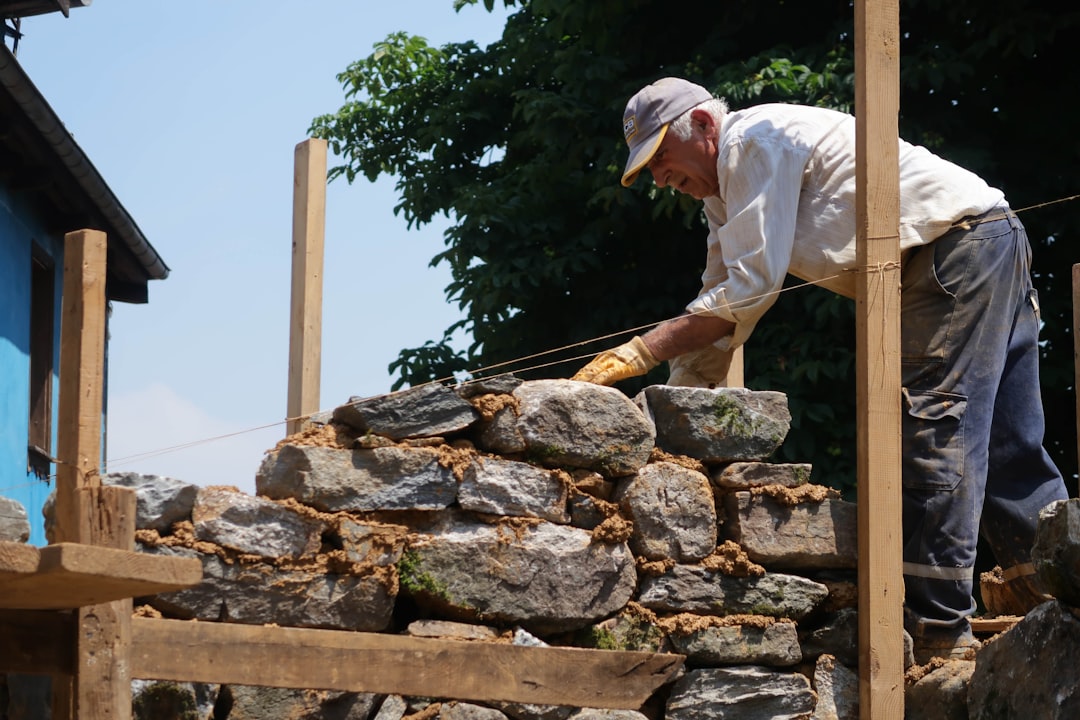
Portland’s signature mix of misty mornings, evergreen backdrops, and eclectic architecture makes stone siding an ideal exterior finish. When you combine the timeless look of natural stone with CountBricks’ AI-driven estimating tools, you get beauty, durability, and budget certainty in one seamless package. This article explains everything Portland homeowners and remodelers need to know about planning a stone siding house project with CountBricks.
• Moisture resistance: Properly installed stone veneer sheds water instead of absorbing it, reducing mold and rot risks in our rainy season.
• Insulation value: A stone siding house in Portland experiences improved thermal mass, helping interiors stay warmer in winter and cooler in summer.
• Low maintenance: Unlike painted wood, stone never peels. A quick rinse once or twice a year is usually all it takes.
• Northwest aesthetic: Whether you favor rustic ledgestone or sleek cut-stone panels, the material pairs perfectly with cedar trim, metal roofs, and the natural surroundings.
Traditional estimates can miss hidden labor hours or overlook fluctuating material prices. CountBricks solves that by capturing a real-time voice conversation with you or your client, instantly translating it into a line-item estimate.
1. Speak your vision: “2400 sq ft two-story, charcoal ledgestone on the front and sides.”
2. AI takeoff: Our blueprint scanner measures every wall area, corner, and trim detail in seconds.
3. Live pricing: CountBricks pulls current stone, mortar, flashing, and fastener costs from regional suppliers in Portland.
4. Instant report: You receive a shareable PDF, editable scope of work, and optional invoice—ready in minutes, not days.
Explore more at CountBricks.com/services.
Natural Hand-Cut Veneer
• Authentic Pacific Northwest river rock or mountain granite
• Average weight 12–15 lbs/sq ft; requires reinforced substrate
Engineered Thin Veneer
• Concrete base colored and textured to mimic quarried stone
• Lightweight panels install over standard sheathing, saving labor
Panelized Stone-Composite Siding
• Foam-backed for extra R-value
• Interlocking edges speed installation while hiding fasteners
1. Site audit and laser measurement captured in the CountBricks mobile app
2. Substrate inspection; any damaged sheathing is flagged in the estimate
3. Weather-resistive barrier and flashing installed to ASTM standards
4. Starter strip and corner stones set for level reference
5. Course-by-course stone placement with staggered joints
6. Mortar tooling or concealed clip fastening (panel systems)
7. Final pressure wash, sealant, and CountBricks quality checklist
• Stone type and thickness: natural veneer averages $18–$24/sq ft, engineered veneer $11–$16/sq ft
• Wall complexity: gables, bump-outs, and window counts affect waste percentage
• Scaffolding height: two-story homes may add 10–12 % in labor
• Permitting requirements in Portland’s seismic zone
Because CountBricks cost libraries update daily, your estimate reflects today’s supplier quotes, not last quarter’s brochure.
• Annual check: Inspect mortar joints and flashing after the wet season.
• Debris control: Trim vegetation at least 6 in away to allow airflow.
• Rinse routine: Low-pressure water spray removes pollen and moss buildup.
With proper upkeep, stone siding easily outlasts wood or fiber cement, giving you 50+ years of service life.
• Voice-to-estimate technology cuts preconstruction time by 65 %
• Integrated scheduling keeps masons, scaffold crews, and inspectors in sync
• Cloud-based change orders let homeowners approve variations with a tap
• Post-project data stored in your CountBricks dashboard aids future remodels
Whether you’re a homeowner upgrading curb appeal or a contractor looking to streamline your bids, CountBricks offers the fastest path from concept to completion. Request a free consultation at CountBricks.com/consultation and see how AI, local craftsmanship, and Portland-tested materials can transform your exterior.

In early spring, CountBricks partnered with a homeowner on SE 38th Avenue who wanted to replace aging cedar shingles with modern stone veneer while preserving the bungalow’s historic trim. Using our AI estimate generator, we captured scope, produced a line-item budget in under 12 minutes, and highlighted three value-engineering options that reduced cost by 9 % without sacrificing appearance.
• Material switch: Natural Columbia River ledgestone to engineered thin veneer saved 550 lbs of structural load.
• Labor efficiency: Panelized corners cut installation time from six to four days, minimizing neighborhood disruption.
• Moisture defense: Upgraded flashing package prevents wind-driven rain intrusion common to east-wind storms.
1. Energy savings: Post-project blower door test showed a 7 % reduction in air leakage.
2. Appraised value: Local realtor report estimated a $34,000 increase in resale value after the siding upgrade.
3. Customer satisfaction: The homeowner rated the CountBricks process 9.8/10, citing real-time cost transparency as the biggest stress reducer.
• Engage CountBricks early: The sooner our AI sees your plans, the easier it is to optimize wall assemblies and flashing details.
• Combine scopes: Pair stone siding with new windows to share scaffolding costs and lock in better package pricing.
• Schedule around Portland’s weather: April through September offers the lowest rainfall risk; CountBricks forecasting tools pick ideal install windows.
Ready for similar results? Visit CountBricks.com/portfolio to explore more stone siding transformations, or schedule your personalized estimate at CountBricks.com/consultation.